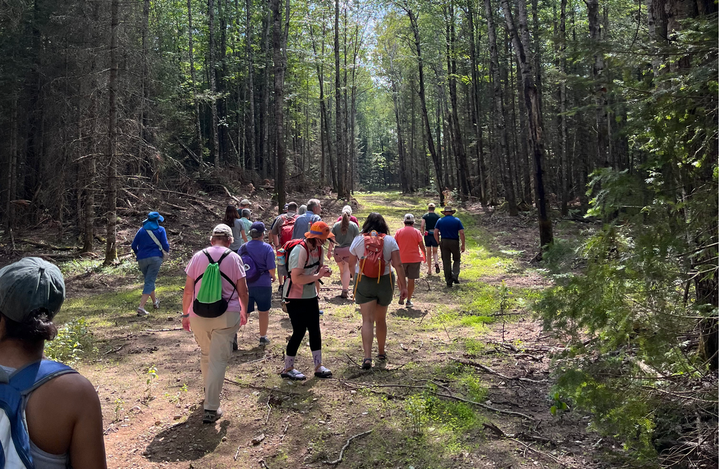Rare Whooping Crane Spotted During Annual Count
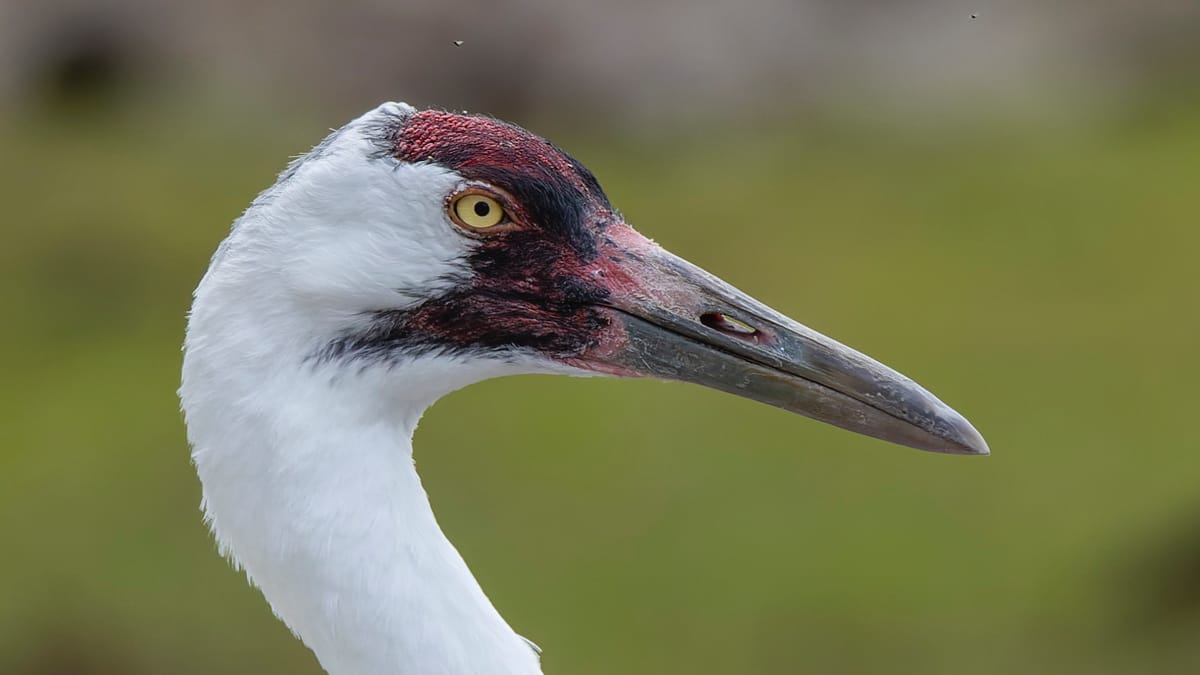
Volunteers in Vilas and Oneida counties turned out for the 49th annual Midwest Crane Count earlier this spring, yielding a nice, respectable sampling of sandhill cranes across Oneida County, said local crane count organizer Bob Dall.
Thirty-nine volunteers took part on a calm but chilly morning in mid-April to gather information on cranes in Oneida County. Locally, several crane counters experienced a special and rare bird sighting, seeing a whooping crane at Munninghoff Marsh.
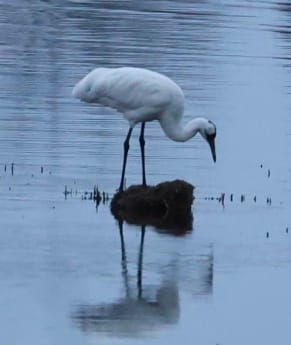
"Over the past 30 years we've only seen them twice during our count," said Dall. "They typically migrate to areas near Necedah, where they've been reintroduced. According to the International Crane Foundation (ICF), this bird likely veered a bit farther east in migration, stopping in Oneida County to rest and feed before continuing west."
Overall, counters logged a total of 135 cranes during their two-hour early morning outing. Thirty-six locations were surveyed, with volunteers finding 51 single cranes and 42 pairs that could be heard calling in unison.
"Many marshes and ponds were still frozen, keeping some cranes from settling into their usual nesting sites while calling or wandering about nearby," Dall noted.
In last year's count, a total of 114 cranes were spotted; 34 individual cranes and 40 pairs.
Bob and his wife, Jan, expressed gratitude toward the volunteers who took part. "On behalf of the cranes, we thank you for your participation in citizen-based conservation during the annual Midwest Crane count. It was wonderful to share in this annual event with you again," the two said.
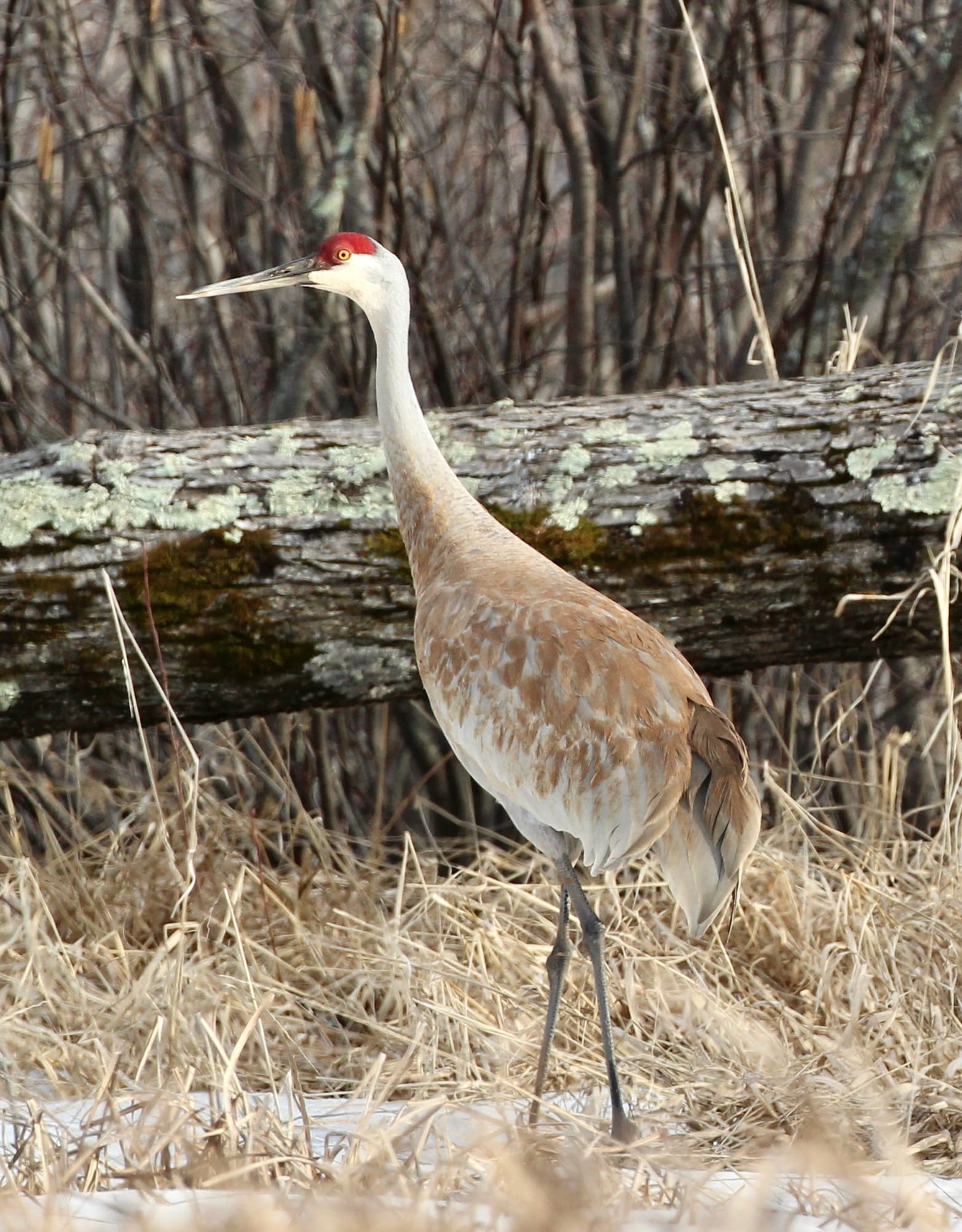
Crane Conservation
The ICF sponsors the annual Midwest Crane Count to conserve the world’s 15 species of cranes and the natural communities on which they depend. Sandhill cranes once nearly disappeared from Wisconsin, but the species has successfully recovered and is slowly expanding into neighboring states.
Observations of sandhill cranes can lend insight into threatened crane species, including the endangered whooping crane. There are now approximately 70 whooping cranes in the reintroduced population in central Wisconsin, according to ICF.
Each year, more than 2,000 volunteer participants from throughout Wisconsin and portions of Illinois, Indiana, Iowa, Michigan, Ohio, and Minnesota participate in the spring survey, which gathers information on the abundance and distribution of cranes in the upper Midwest.
Volunteers' results are entered into an ongoing database maintained by the ICF. From the information collected, researchers can learn more about the sandhill crane, which enables scientists and wildlife managers globally to develop management strategies that can be applied to all 15 species of cranes — nearly all of which face serious survival threats and challenges.
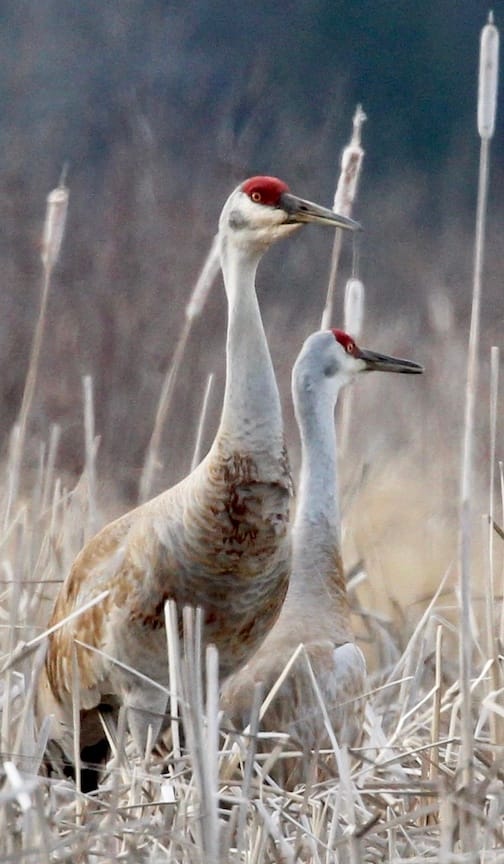
The Dalls encourage anyone interested in the conservation of these rare birds to visit the International Crane Foundation, located in Baraboo.
"This world-class research and educational facility is practically in our back yard. We can’t express our enthusiasm, and encouragement, enough to visit there. You will see all 15 crane species in their outdoor captive breeding and study areas and view professional education exhibits. For an awe-inspiring experience, do visit the International Crane Foundation," Bob Dall said. To plan a visit or learn more about the foundation's efforts, go to savingcranes.org.


